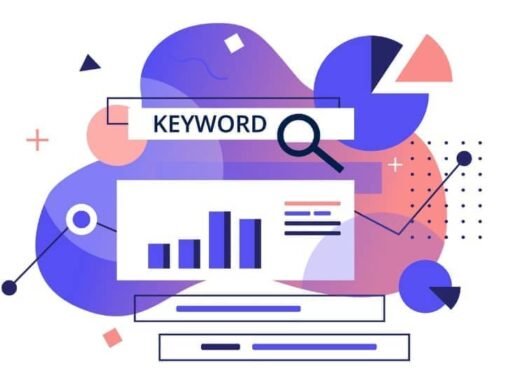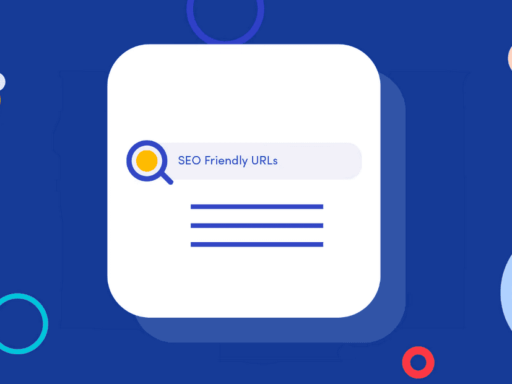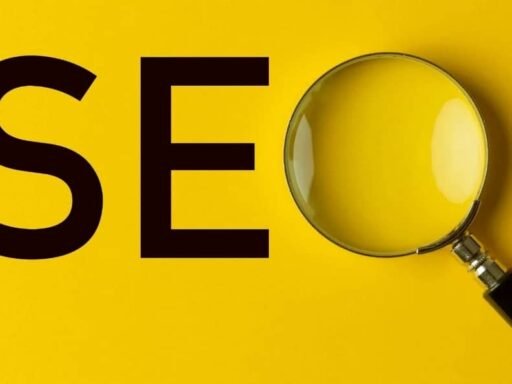Welcome to our guide on on-page SEO! If you’re looking to improve your website’s visibility and drive targeted traffic, optimizing your website’s content is crucial. On-page SEO involves making specific changes and tweaks to your website’s content, tags, and internal links to enhance search visibility and increase organic rankings. In this article, we will explore the key elements of on-page SEO and provide you with a comprehensive checklist for optimizing your website’s content effectively.
Key Takeaways:
- On-page SEO is essential for improving your website’s search visibility and driving targeted traffic.
- Search engines use algorithms to evaluate website content and determine its relevance to search queries.
- Optimizing content, HTML elements, and site architecture are crucial for on-page SEO success.
- Key factors in on-page SEO include content optimization, HTML optimization, and site architecture optimization.
- Regularly auditing and updating your on-page SEO efforts is necessary to stay ahead of algorithm changes and industry trends.
The Basics of Search Engine Optimization
Search engine optimization (SEO) is a fundamental aspect of improving your website’s visibility and performance on search engine results pages (SERPs). By understanding the basics of SEO and staying up-to-date with Google’s algorithm updates, you can effectively optimize your website’s content and maintain or improve your rankings.
How Search Engines Work
Search engines like Google use crawlers or spiders to explore the internet and index websites. These crawlers analyze the content of websites and evaluate how well it aligns with user queries. Google’s algorithm, which undergoes regular updates, determines how websites are ranked on SERPs based on various factors such as relevance, quality, and user experience.
The Importance of SEO
SEO plays a crucial role in improving your website’s visibility and attracting organic traffic. Without SEO, your website may not rank well on SERPs, making it difficult for potential customers to find you. By implementing SEO best practices, you can increase your website’s chances of ranking higher and driving targeted traffic to your pages.
Optimizing Your On-Page SEO
On-page SEO focuses on optimizing individual web pages to improve their visibility on search engines. Key components of on-page SEO include keyword research, optimizing meta tags, creating high-quality content, improving website speed, and enhancing user experience. By paying attention to these factors, you can enhance your website’s performance and improve your rankings.
| On-Page SEO Factors | Description |
|---|---|
| Keyword Research | Identify relevant keywords to target in your content |
| Meta Tags Optimization | Create compelling title tags and meta descriptions |
| High-Quality Content | Produce informative and engaging content that answers user queries |
| Website Speed Optimization | Ensure your website loads quickly for optimal user experience |
| User Experience Enhancement | Improve navigation, mobile responsiveness, and accessibility |
By following these on-page SEO practices, you can increase your website’s search visibility, attract more organic traffic, and improve the overall performance of your online presence.
Importance of On-Page SEO
On-page SEO is crucial for improving search visibility, increasing traffic, and achieving higher organic rankings. When you optimize your website’s content, you enhance your chances of ranking higher on search engine results pages (SERPs) and attracting more organic clicks. Additionally, optimizing your on-page SEO helps improve your organic click-through rates (CTR), resulting in more website visitors and potential customers.
To understand the importance of on-page SEO, consider the following:
- Improved search visibility: On-page SEO ensures that search engines can easily recognize and index your website’s content, making it more visible to users searching for relevant keywords.
- Increased traffic: Higher search visibility leads to increased organic traffic, as the top-ranking websites on SERPs receive the majority of clicks.
- Enhanced organic rankings: By optimizing your on-page SEO elements, such as meta tags, headings, and keyword usage, you can improve your website’s organic rankings and outrank competitors.
- Better user experience: On-page SEO includes optimizing your website’s content structure, readability, and usability, resulting in a positive user experience and longer time on site.
By prioritizing on-page SEO, you can maximize your website’s potential, attract targeted traffic, and achieve better visibility and organic rankings.
| Not Optimized On-Page SEO | Optimized On-Page SEO | |
|---|---|---|
| Search Visibility | Low | High |
| Traffic | Minimal organic traffic | Increased organic traffic |
| Organic Ranking | Poor rankings on SERPs | Higher rankings on SERPs |
| User Experience | Poor structure and readability | Improved structure and readability |
Essential On-Page SEO Factors – Content
When it comes to on-page SEO factors, content optimization plays a significant role in improving search engine rankings and attracting targeted organic traffic to your website. By understanding and implementing key strategies, you can enhance your website’s visibility and user experience. Here are some essential on-page SEO factors to consider:
1. Google’s E-A-T Guidelines
Google’s E-A-T (Expertise, Authoritativeness, and Trustworthiness) guidelines are crucial in establishing your website’s credibility and expertise in a specific field. To optimize your content for E-A-T, focus on providing accurate and well-researched information, citing reliable sources, and displaying author credentials when applicable.
2. Thorough Keyword Research
Effective keyword research enables you to identify the search terms that your target audience is using. By incorporating these keywords naturally and strategically into your content, you can enhance your website’s relevance and visibility on search engine results pages (SERPs).
3. SEO Writing Techniques
Implementing SEO writing techniques can help search engines better understand the context and relevance of your content. These techniques include using descriptive headings (H1, H2, H3), structuring your content with proper formatting, employing relevant keywords in titles and subheadings, and maintaining a natural flow in your writing.
4. Utilizing Visual Assets
Incorporating visual assets such as images and videos into your content can greatly enhance the user experience and make your website more engaging. Optimizing images with alt-text tags and descriptive file names can improve your website’s visibility in visual search results. Additionally, creating informative and visually appealing videos can increase the time users spend on your website, signaling to search engines that your content is valuable.
| Benefits of Content Optimization | Examples |
|---|---|
| Improved search visibility | – Higher rankings on SERPs – Increased organic traffic |
| Enhanced user experience | – Engaging and informative content – Visual assets for better understanding |
| Increased relevance | – Well-optimized content for specific keywords – Contextually rich information for users |
Essential On-Page SEO Factors – HTML
When it comes to on-page SEO, HTML elements play a significant role in optimizing your website for search engines. By strategically optimizing HTML elements, you can improve search visibility, increase click-through rates, and enhance user experience. Let’s explore the essential HTML elements for on-page SEO:
Title Tags
Title tags are HTML elements that define the title of a webpage. Optimizing title tags with relevant keywords and compelling content helps search engines understand the context of your page and improves click-through rates from SERPs. Ensure that your title tags accurately describe the content of your page and are within the recommended length of 50-60 characters.
Meta Descriptions
Meta descriptions provide a concise summary of a webpage’s content. Crafting compelling meta descriptions with relevant keywords can drive more organic traffic to your website. Although meta descriptions don’t directly impact search rankings, they play a crucial role in influencing users’ decision to click on your page. Aim for descriptive and engaging meta descriptions within the optimal length of 150-160 characters.
Image Optimization
Images play a vital role in enhancing the user experience and attracting traffic from visual searches. Optimize your images by adding SEO-friendly alt tags that accurately describe the content of the image. Additionally, consider optimizing image file sizes to improve page load speed and overall site performance.
Geotagging
Geotagging is especially important for businesses that rely on local customers. By adding location-specific metadata to your website, search engines can better understand your business’s geographical relevance. This increases the visibility of your website in local search results and helps attract targeted organic traffic from users in your area.
By optimizing these HTML elements, you can improve your website’s on-page SEO and increase its visibility on search engine results pages. Remember to strategically incorporate relevant keywords and compelling content to maximize your search visibility and drive targeted traffic to your website.
Essential On-Page SEO Factors – Site Architecture
Site architecture plays a crucial role in on-page SEO, impacting the visibility and performance of your website. By optimizing key elements of your site’s structure, you can enhance user experience, improve search engine rankings, and drive organic traffic. Let’s explore the essential on-page SEO factors related to site architecture:
1. Page URLs Optimization
Optimizing your page URLs is an important on-page SEO factor. By including relevant keywords in your URLs, you can provide search engines with valuable information about your content and improve your website’s visibility in search results. Choose descriptive and concise URLs that accurately represent the page’s content.
2. Consistent Site Hierarchy
A consistent site hierarchy helps search engines understand the organization of your website. By maintaining a logical structure with clear categories and subcategories, you make it easier for search engines to index your pages and determine their relevance to user queries. This also improves navigation for site visitors, helping them find the information they need quickly and effortlessly.
3. Internal Linking
Internal linking refers to the practice of linking pages within your own website. This not only improves navigation but also allows link equity to flow throughout your website, helping search engines discover and index your content more effectively. Internal links guide users to relevant content, increase session duration, and contribute to a better user experience.
4. Mobile Responsiveness
In today’s mobile-first era, mobile responsiveness is crucial for on-page SEO. With an increasing number of users accessing websites on mobile devices, search engines prioritize mobile-friendly websites. Ensuring your site is responsive and optimized for different screen sizes improves user experience and helps you meet Google’s requirements for mobile-first indexing.
5. Site Speed Optimization
Site speed is a vital factor for both user experience and search engine rankings. Slow-loading websites can lead to higher bounce rates and lower organic rankings. Optimize your site’s speed by optimizing images, minimizing the use of unnecessary scripts, and utilizing caching techniques. A fast-loading website not only improves rankings but also encourages visitors to stay longer and engage with your content.
| On-Page SEO Factors – Site Architecture | Importance |
|---|---|
| Page URLs Optimization | Enhances search engine visibility and user understanding of the page’s content |
| Consistent Site Hierarchy | Improves search engine indexing and navigation for users |
| Internal Linking | Facilitates link equity flow and guides users to relevant content |
| Mobile Responsiveness | Meets Google’s mobile-first indexing requirements and improves user experience |
| Site Speed Optimization | Enhances user experience, reduces bounce rates, and improves organic rankings |
On-Page SEO Checklist
Optimizing your website’s on-page SEO is essential for improving search engine rankings and increasing organic traffic. Follow this comprehensive checklist to ensure your website’s content is fully optimized:
- Include target keywords in URLs: Incorporate relevant keywords into your page URLs for better search visibility.
- Optimize page titles with relevant keywords: Craft compelling titles that include target keywords to attract users and search engines.
- Use header tags effectively: Utilize H1, H2, and H3 tags to structure your content and highlight important sections.
- Incorporate keywords in body copy: Sprinkle target keywords naturally throughout your content to help search engines understand your page’s topic.
- Add meta descriptions with compelling content: Write engaging meta descriptions that summarize your page’s content and entice users to click.
- Optimize visual content with alt-text: Use descriptive alt-text for images to improve accessibility and assist search engines in understanding visual content.
- Include internal links to relevant pages: Link to other relevant pages within your website to improve site navigation and establish content hierarchy.
- Ensure mobile responsiveness and site speed: Optimize your website for mobile devices and optimize site loading speed to enhance user experience and satisfy search engine requirements.
By following this comprehensive on-page SEO checklist, you can maximize your website’s visibility, attract targeted traffic, and improve your search engine rankings.
Managing On-Page SEO at Scale
Scaling your on-page SEO efforts can be a daunting task, especially when dealing with larger websites or enterprises that have numerous pages. However, there are automation tools available that can help you effectively manage and streamline your on-page SEO tasks.
One such tool is the optimization of meta tags. These tags provide important information about your webpage to search engines, impacting how it appears in search results. By using automation tools, you can easily optimize meta tags across multiple pages, saving valuable time and effort.
Example:
| Automation Tools | Description |
|---|---|
| Moz Pro | A comprehensive SEO software that offers on-page optimization features, including keyword research, site audits, and content recommendations. |
| Screaming Frog | A web crawling tool that helps identify on-page SEO issues, such as broken links, missing meta tags, and duplicate content. |
| Google Search Console | A free tool provided by Google that allows you to monitor and maintain your website’s presence in search results. |
Another vital aspect of managing on-page SEO at scale is generating XML sitemaps. XML sitemaps provide search engines with a roadmap of your website’s pages, ensuring that they are properly indexed. Automation tools can assist in generating XML sitemaps quickly, enabling efficient communication with search engines and improving your website’s visibility.
Furthermore, monitoring page performance is essential to ensure that your on-page SEO efforts are yielding positive results. Automation tools can help track important metrics, such as organic traffic, bounce rate, and click-through rate, allowing you to make data-driven decisions to optimize your website’s content further.
An Effective On-Page SEO Strategy
To successfully manage on-page SEO at scale, it is crucial to implement a cohesive and strategic approach. This involves regularly auditing your website’s content and updating it with relevant keywords, as well as ensuring that all on-page elements, such as meta tags and header tags, are optimized for search engines.
By consistently following an on-page SEO strategy, you can ensure that your website’s content remains optimized and aligned with search engine algorithms. Regularly monitoring your website’s performance and making necessary adjustments will help drive targeted traffic and improve your organic rankings.
To summarize, managing on-page SEO at scale requires leveraging automation tools to streamline tasks such as optimizing meta tags, generating XML sitemaps, and monitoring page performance. Additionally, implementing a well-defined on-page SEO strategy that involves regular audits and updates is crucial to maintaining optimization and driving targeted traffic to your website.
Conclusion
Optimizing your website’s content with on-page SEO is crucial for achieving higher search engine rankings, driving targeted traffic, and enhancing the user experience. By effectively optimizing your content, HTML elements, and website architecture, you can maximize your website’s visibility on search engine results pages and attract organic traffic that is more likely to convert.
To ensure on-page SEO success, it is essential to consistently analyze and update your strategies to align with algorithm changes and industry trends. Regular audits and updates will help you stay ahead of the competition and maintain your website’s visibility in search engine rankings.
Remember, on-page SEO is not a one-time task but an ongoing effort to improve your website’s performance. With the right tools and strategies, you can optimize your website’s content, provide a seamless user experience, and achieve the full potential of on-page SEO for your online success.
FAQ
What is on-page SEO?
On-page SEO refers to the practice of optimizing your website’s content, tags, and internal links to improve its visibility and ranking on search engine results pages (SERPs).
Why is on-page SEO important?
On-page SEO is crucial because it helps search engines understand your website better, improves your organic rankings, and drives targeted traffic to your website.
What are the key elements of on-page SEO?
The key elements of on-page SEO include content optimization, HTML optimization, and website architecture optimization.
How does on-page SEO impact search visibility and traffic?
On-page SEO directly impacts search visibility and traffic by improving your website’s chances of ranking higher on SERPs and increasing organic click-through rates (CTR).
What are some essential factors for content optimization in on-page SEO?
Some essential factors for content optimization in on-page SEO include understanding Google’s E-A-T guidelines, conducting keyword research, using effective SEO writing techniques, and utilizing visual assets.
What are the HTML elements that play a significant role in on-page SEO?
HTML elements such as title tags, meta descriptions, image optimization, and geotagging are crucial for on-page SEO.
How does website architecture optimization contribute to on-page SEO?
Website architecture optimization contributes to on-page SEO by optimizing page URLs, internal linking, mobile responsiveness, and site speed.
What are the key items to include in an on-page SEO checklist?
An on-page SEO checklist should include including target keywords in URLs, optimizing page titles, effectively using header tags, incorporating keywords in body copy, adding meta descriptions, optimizing visual content with alt-text, including internal links, and ensuring mobile responsiveness and site speed.
How can on-page SEO be managed at scale?
On-page SEO can be managed at scale by using automation tools for tasks such as optimizing meta tags, generating XML sitemaps, and monitoring page performance. Implementing a cohesive on-page SEO strategy and regular audits are also crucial.
What is the importance of on-page SEO for optimizing a website?
On-page SEO is a critical aspect of optimizing a website’s content for improved search engine rankings, increased traffic, and enhanced user experience.





